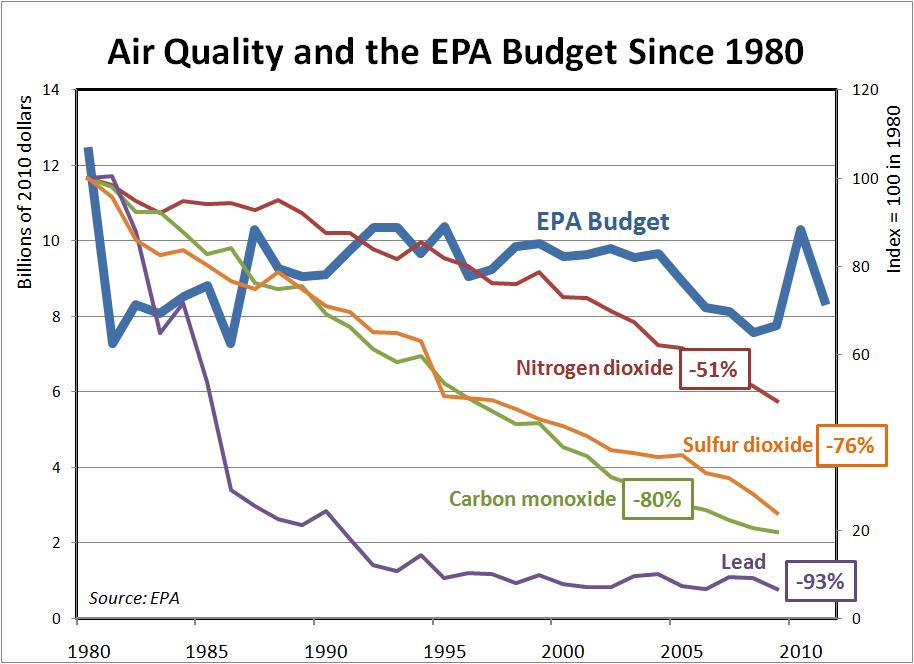With the battle over the debt heating up in Congress, the EPA has once again become the target of budget cutters in Washington. A plan by House Republicans to reduce funding for the agency has been called an “environmental disaster” and a “declaration of war” on environmental protections. But the question no one is asking is what effect the EPA’s budget has on measured environmental quality. Do increased EPA budgets result in direct improvements in environment quality, or does it simply increase the size and scope of the agency? Could budget cutting reduce bureaucracy without reducing environmental quality?
Consider the figure above, which shows that since 1980, the EPA’s budget (adjusted for inflation) has remained relatively flat, yet air quality continually improved. Ambient concentrations of nitrogen dioxide have declined by 51%, sulfur dioxide by 76%, carbon monoxide by 80%, and lead by 93% (data here). Moreover, as Joel Schwartz described in PERC Reports, fine particulate levels have declined by 42% and peak ozone levels have fallen 30% as well. Such data suggest that increasing the EPA’s budget, as the Obama administration has proposed, will only increase bureaucracy, not air quality.
Since the EPA sets national air quality standards, the agency decides when its own job is finished. Despite such improvements, the EPA has never declared the air safe and continues to push for more funding, more workers, and more regulations. If lawmakers are looking for an agency in which to cut spending without causing harm to the environment, the EPA is a great place to start.
This post was co-authored with Shawn Regan.



